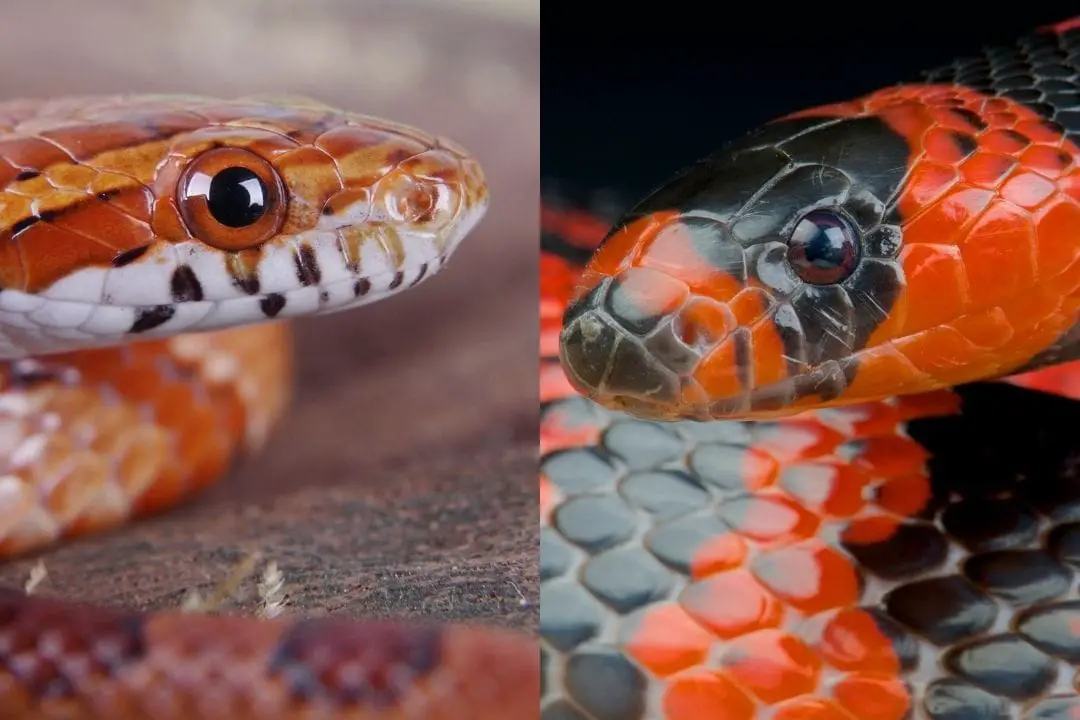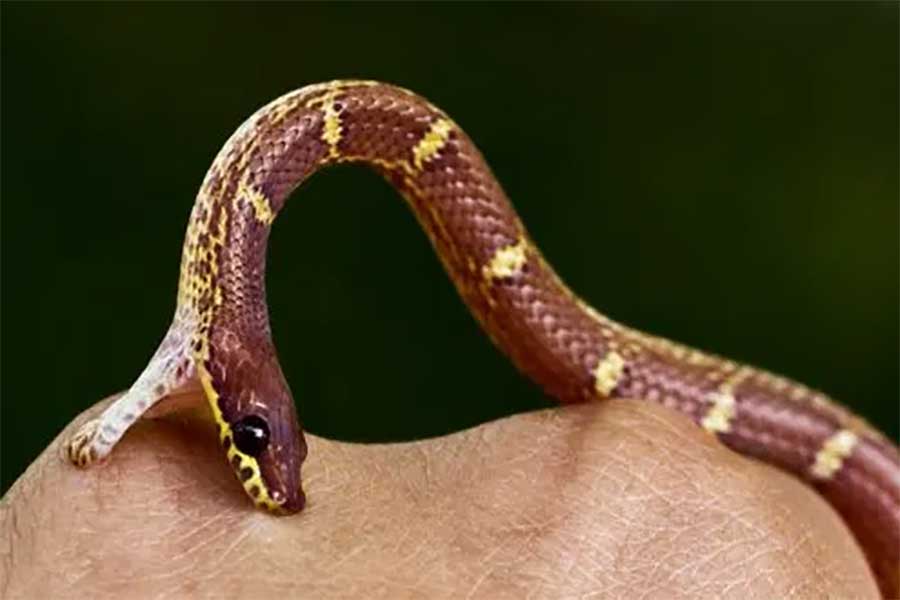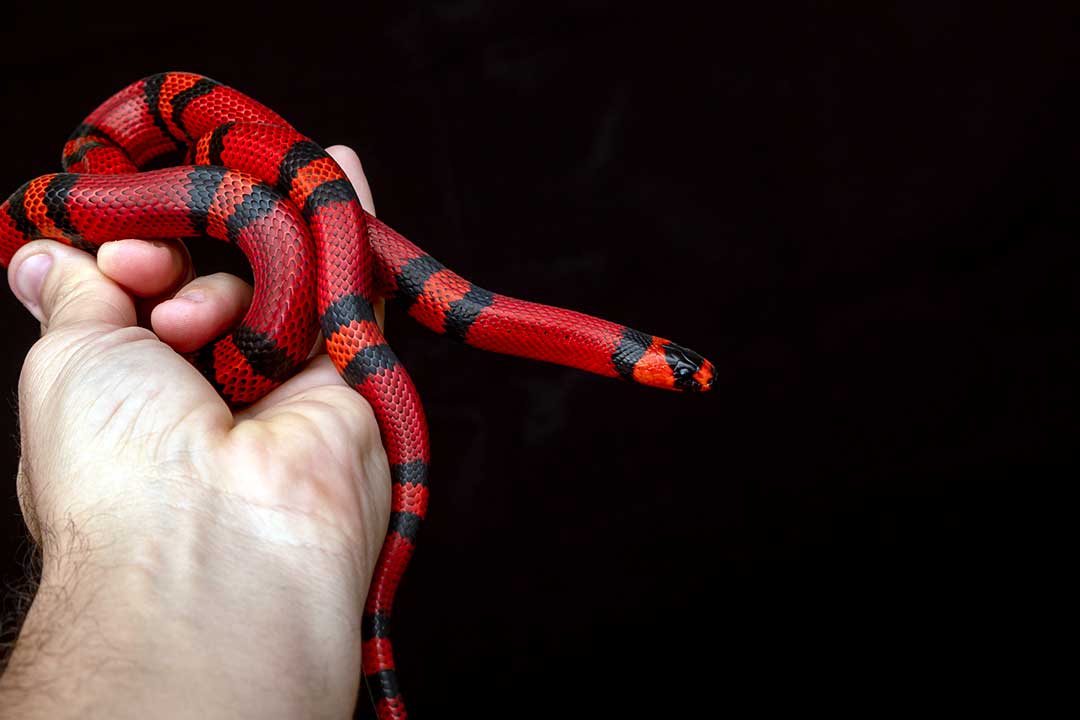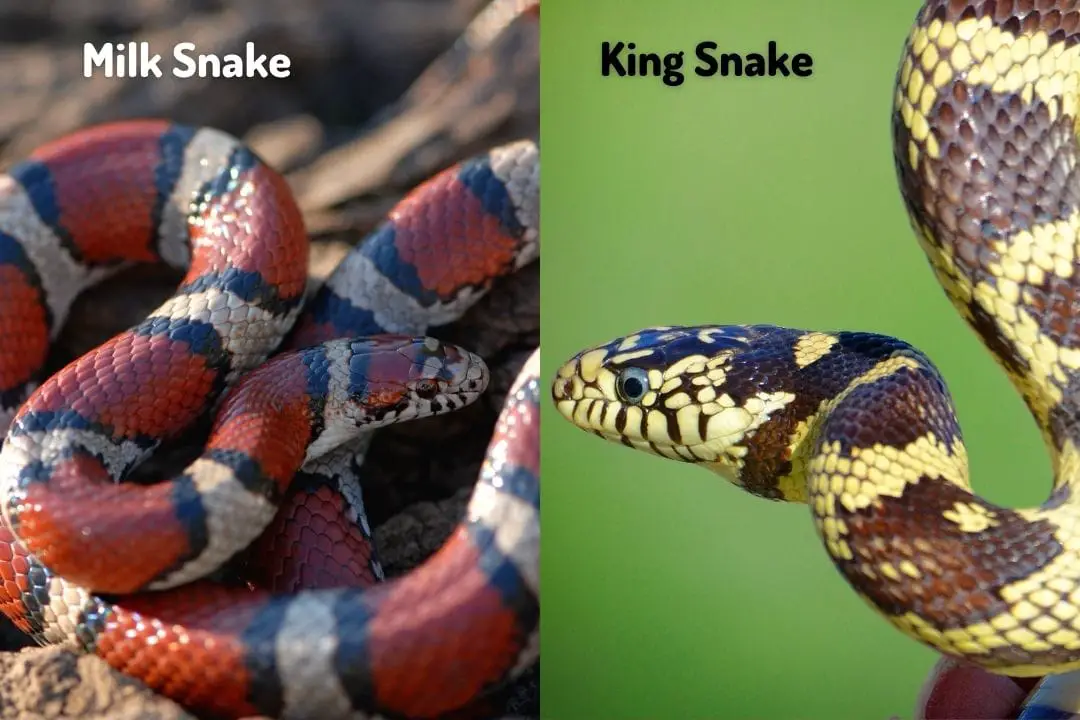Milk snakes and corn snakes are some of the best choices among snake lovers because they are generally docile, easier to care for and safer than most species.
While there are many similarities between the milk snake and the corn snake, what makes them different from one another?
Milk snakes are slightly smaller than corn snakes and are the more brightly colored of the two species. Meanwhile, corn snakes tend to be the easier of the two to feed. While both are generally docile and non-venomous, the corn snake is the more docile of the two and is less likely to show aggression even when stressed.
Even though both the milk snake and the corn snake have a lot of commonalities between them, there are plenty of differences that make these snakes unique in their own right. Of course, these differences are also what make them great pet snakes in their own unique way as well. Now, let’s get to know more about what makes the milk snake and the corn snake different from one another.
Appearance
Milk snake
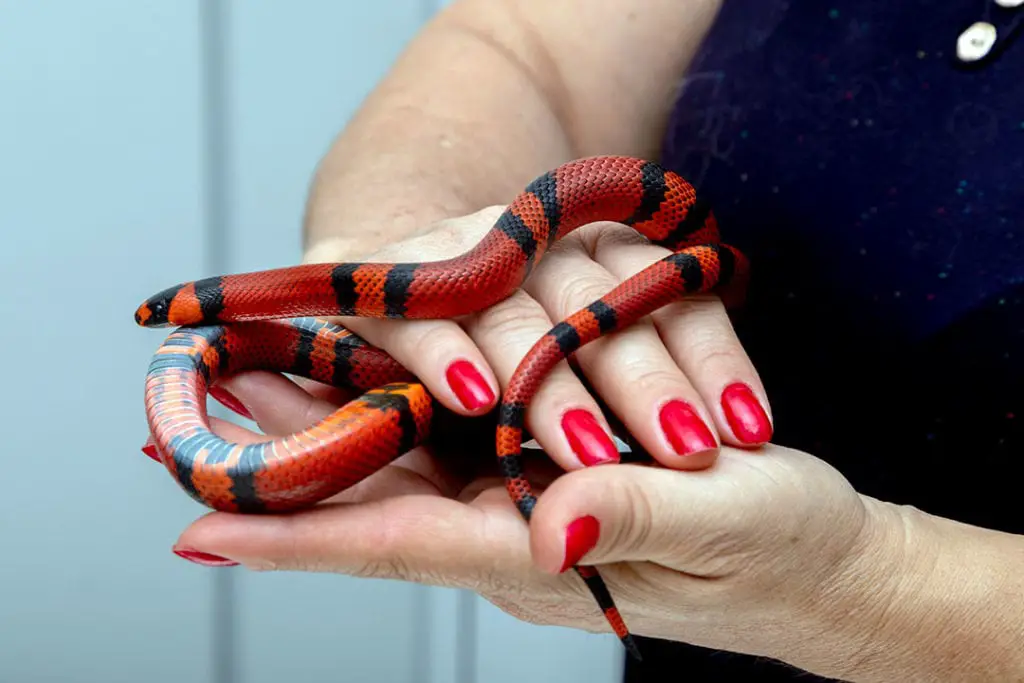
The milk snake is one of the most popular snake species mainly due to its appearance.
You can be sure that the milk snake can easily captivate the eyes of visitors and guests because of its brightly colored scales and because of how the different bands surrounding its body tend to come in bright colors as well.
Milk snakes tend to have distinctly colored bands to the point that there are too many types of milk snake subspecies to count due to how they all differ in the color of their bands.
Corn snake

While not as brightly colored as the milk snake, the corn snake is also quite popular because it comes in different colors.
Instead of bands, the corn snake comes with the usual patterns or spots that you see in a lot of different snake species.
Of course, like the milk snake, the different patterns and colors that corn snakes come with can be captivating and eye-catching as well.
Size
Milk snake
Another reason that makes the milk snake such a popular pet snake is that it isn’t a large snake. In fact, the milk snake is quite small and can reach a maximum length of somewhere around 60 inches in the wild. In captivity, however, they can be quite bulky and can weigh up to nearly two pounds.
Corn snake
The corn snake is also a snake species that isn’t too large or too long as well. This makes it ideal for small spaces because of how this snake won’t end up taking a lot of habitat space.
Corn snakes in the wild can grow up to nearly six feet long. This makes the corn snake a bit longer than most milk snakes even though both of these snakes aren’t really too long and are just big enough to make them perfect as pets.
Natural habitat
Milk snake
Due to how the milk snake can be found in almost any region in the world, this snake species is actually quite well-adapted to different kinds of natural habitats. They are versatile enough to live in different regions such as grassy lands and rocky mountains. And, during the winter, they tend to move to higher locations and hibernate whenever the season gets a bit too cold for them. Meanwhile, they become active once the season warms up again.
Corn snake
Similar to how the milk snake is a very versatile snake, the corn snake can also live in a wide variety of different natural habitats and even man-made objects.
That’s why it is quite easy to spot corn snakes in forests, grasslands, and even abandoned buildings with plenty of rats for the corn snake to feed on. Corn snakes tend to live in areas that are far from the sea, and that makes them a bit less versatile. And while corn snakes do prefer to stay on the ground, they may sometimes exhibit arboreal tendencies from time to time such as climbing trees or elevated objects.
Diet
Milk snake
Milk snakes are actually not too picky when it comes to their diet. In the wild, milk snakes tend to be a human’s friend (as long as they do not overpopulate an area) because of how they eat a lot of different pests including rats or mice.
They are also quite opportunistic in the sense that they will eat anything that moves so long as their prey is smaller than the snake. This includes birds, frogs, eggs, and even smaller snakes.
In captivity, the milk snake can be a bit difficult to feed because they don’t do well when it comes to eating through tongs. Those that were bred in captivity may be easier to feed but wild-caught milk snakes are harder to feed using tongs.
If you can, you may want to provide your milk snake with live food such as live rodents. However, if frozen mice are all that you can feed your milk snake, you will find that feeding it in captivity can be challenging.
Corn snake
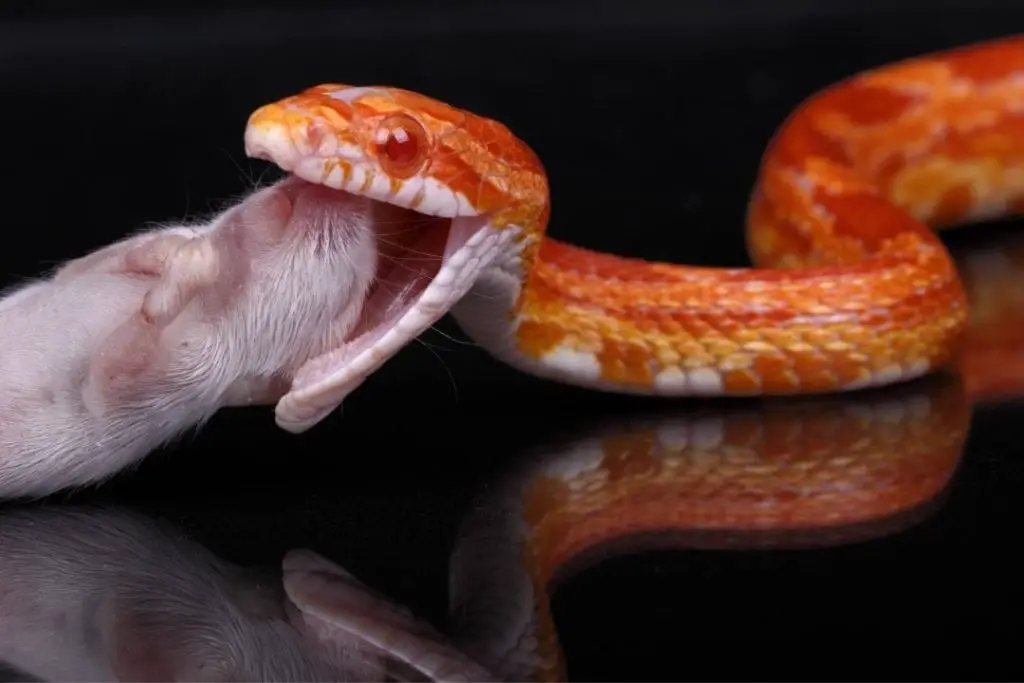
Corn snakes are the ideal snakes when it comes to feeding time because they will eat almost anything through tongs.
They are ideal feeders because they are not too picky and are usually easier to feed with frozen mice using your tongs so that you don’t have to stick with live food items such as live rats anymore.
In the wild, corn snakes are similar to any other snake of its size because it feeds on rodents, amphibians, and even smaller reptiles. On the occasion, corn snakes may even eat birds and bird eggs depending on their nutritional needs and the availability of food in the area.
Behavior and temperament
Milk snake
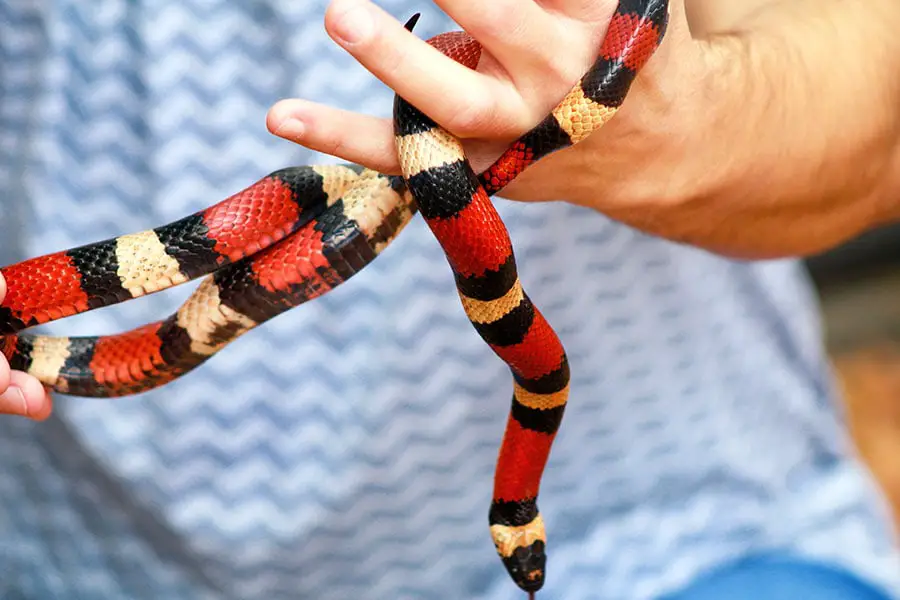
It is quite easy for anyone to handle milk snakes because these snakes are generally docile and are not as aggressive as most other snake species.
They are not known to bite out of whim, and that makes them easy to handle even for beginners who are not used to handling snakes. However, if you are too rough on the snake to the point that it gets stressed out or if it is in the middle of a stressful situation such as when it is shedding or when it is hungry, the milk snake becomes quite aggressive and will bite in self-defense.
But the good news is that milk snake bites are generally harmless because of how these non-venomous snakes have small teeth.
Corn snake
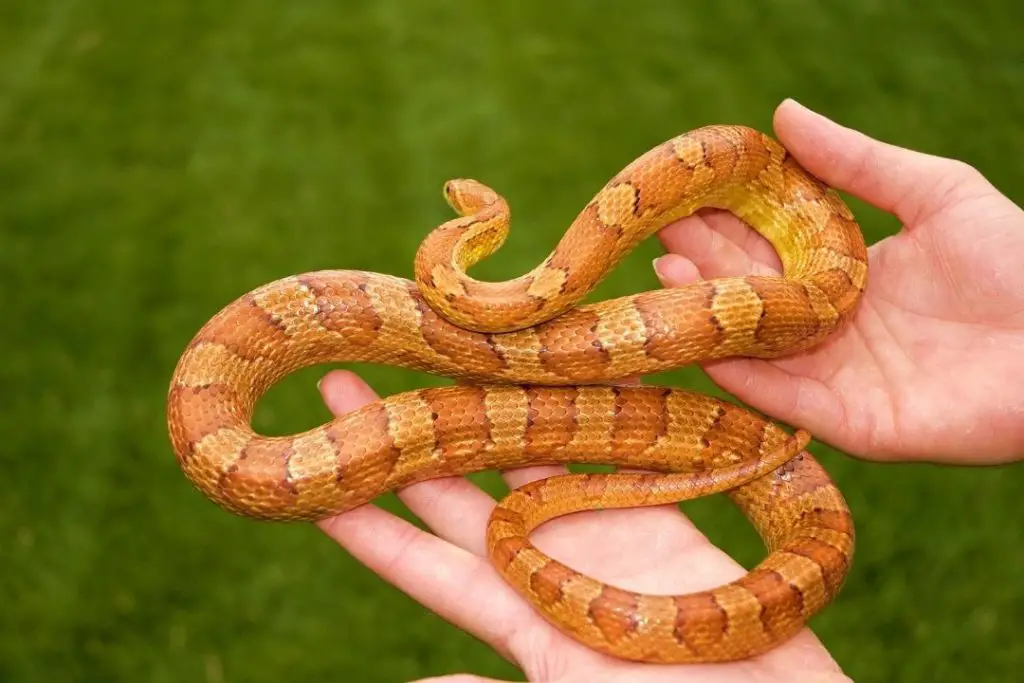
Similar to milk snakes, corn snakes are some of the calmest and most docile snake species in the world. This fact makes the corn snake a generally great beginner snake because it is easy to handle and is quite calm even for those who are still nervous around snakes. Some corn snakes even like getting handled by their owners.
The best part about corn snakes is that they are not easily stressed out and are not generally afraid of getting handled. Even if a corn snake ends up getting stressed, it is not likely to bite due to stress (even though corn snakes may still bite from time to time). Baby corn snakes, however, are known to be aggressive biters. And even if a corn snake bites, it is not a venomous snake although it does resemble the venomous copperhead snake.
What are their major differences?
As you can see, there are plenty of similarities between the milk snake and the corn snake in the sense that they are docile and non-venomous snakes that generally follow the same diet in captivity. These qualities are what make them ideal pets for beginner reptile owners.
However, appearance-wise, the milk snake is much more colorful and eye-captivating than the corn snake. They come in bright colors and in different types of bands that tend to be unique.
And milk snakes are better for those who are looking for snakes that are quite small because these snakes only end up growing to about five feet long at the maximum.
Meanwhile, the corn snake is still regarded as the better beginner snake of the two because it has qualities that make it ideal for beginner snake owners.
The first is that the corn snake is easier to feed because it takes food from tongs quite easily and willingly. And the next reason is that these snakes rarely bite or constrict because they are not easily stressed out whenever they are handled by their owner. In fact, corn snakes can actually enjoy getting handled.
So, with all that said, the milk snake is the better option for those who are looking for snakes that are great for display because they are beautiful reptiles but may get temperamental despite their docile nature.
On the other hand, while the corn snake is also beautiful in its own right, it is better for those who prefer the most docile and beginner-friendly snake around.
Everything you need to know about caring for Milk Snakes in captivity:
Read our Milk Snake Care Sheet (Complete Guide)
Resources:
https://www.reptileforums.co.uk/threads/corn-snake-vs-milk-snake.251958/
